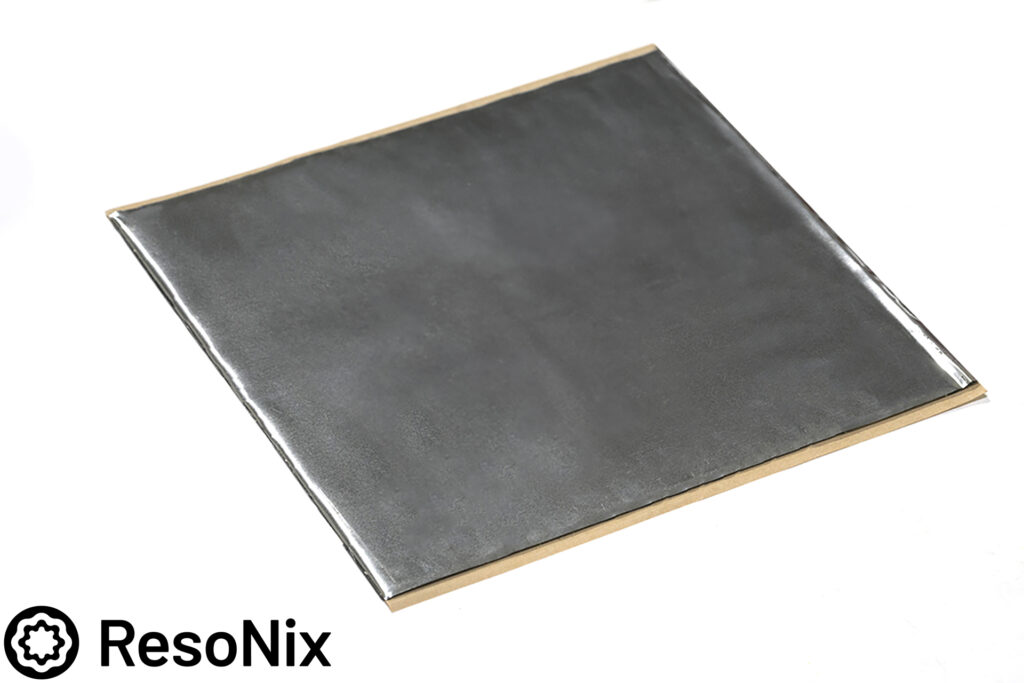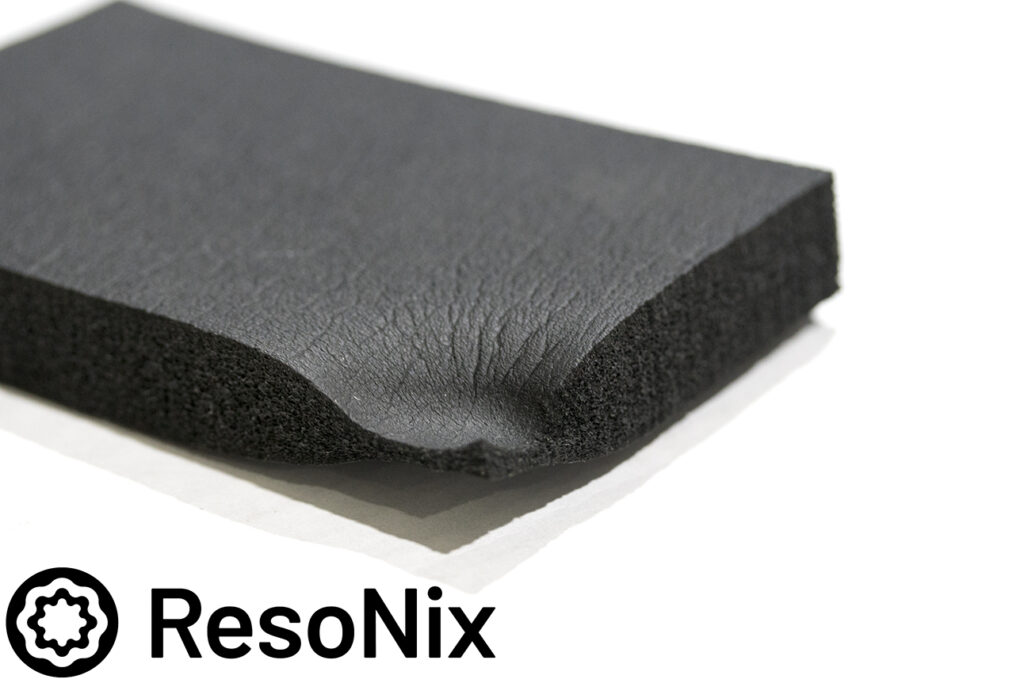2009-2014 Acura TL Door Sound Deadening
For this 2009-2014 (Fourth Generation) Acura TL, we did a basic sound system and did a Stage 1 sound treatment package on the doors. Here is what we did.
Products used:
- CLD Squares: 12
- CLD Rectangles: 4
- FD2: 1 yard
- Butyl Rope: 4 feet
The first step is to remove the door panel. Remove the trim of the handle and remove the screw behind it, as well as the other two screws highlighted. Do not remove the screws from the door latch. That will stay in place and the door panel will remove separately.
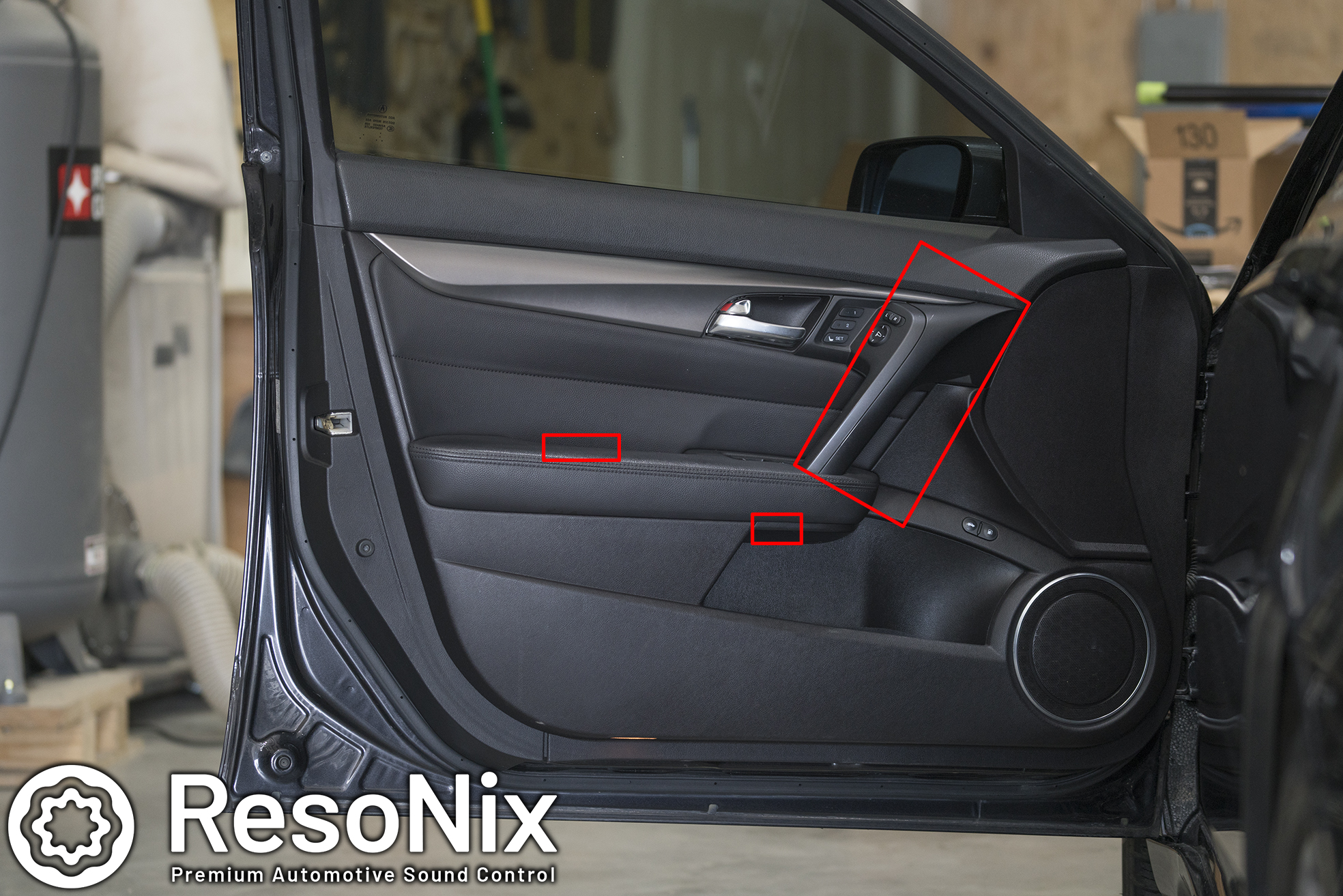
Once the door panel is off, you will find the OEM moisture barrier, which we will want to remove. As you can see, this car had already been worked on as it had a window replaced. We did not end up re-using the moisture barrier anyway.

Once the moisture barrier was removed, we applied ResoNix Squares to the outer door skin and ended up with about 75% coverage. We also applied butyl rope to the gaps between the crash bars and the outer door skin. Sorry, we forgot to take a photo of that, but you can see how it’s done in our “How-To: Doors” section.

Once the outer door skin was done, we covered the holes with ResoNix Rectangles which we then applied ResoNix Squares to for extra support.
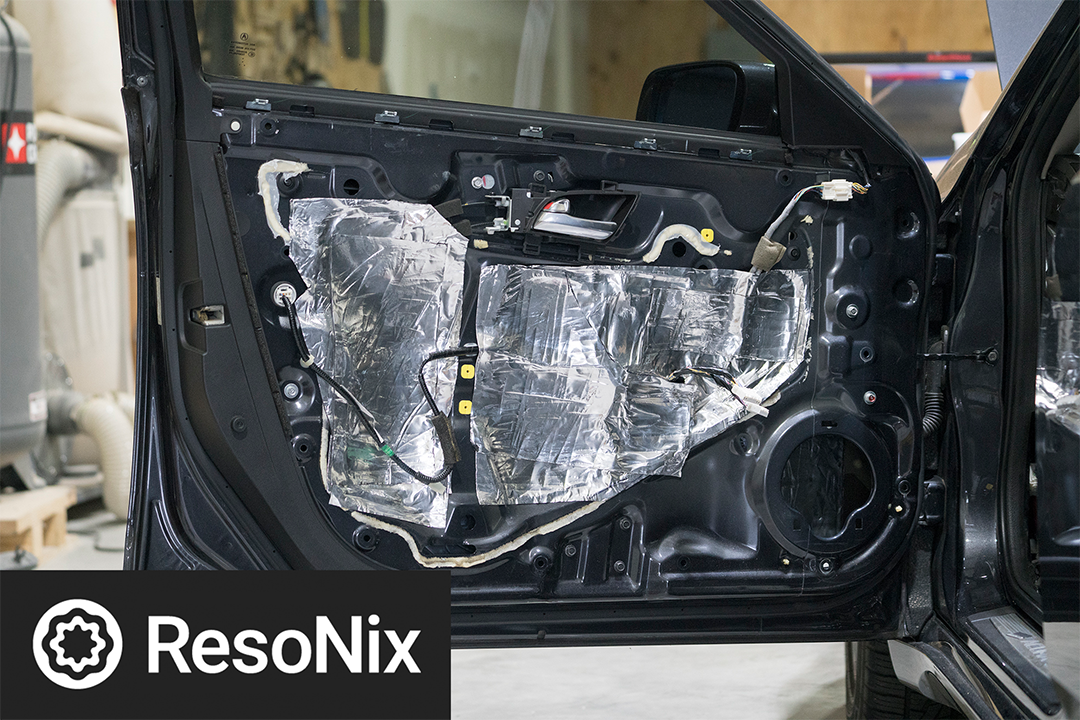
Once our resonance control efforts using our CLD products were done, we moved our attention to reducing panel-on-panel vibration and rattles. Closed cell foam was applied to the inner door skin with 100% coverage. Side note, our FD1 & FD2 were not in stock at the time of this install. We had to use another CCF we had left over. For this install, I would suggest FD2.
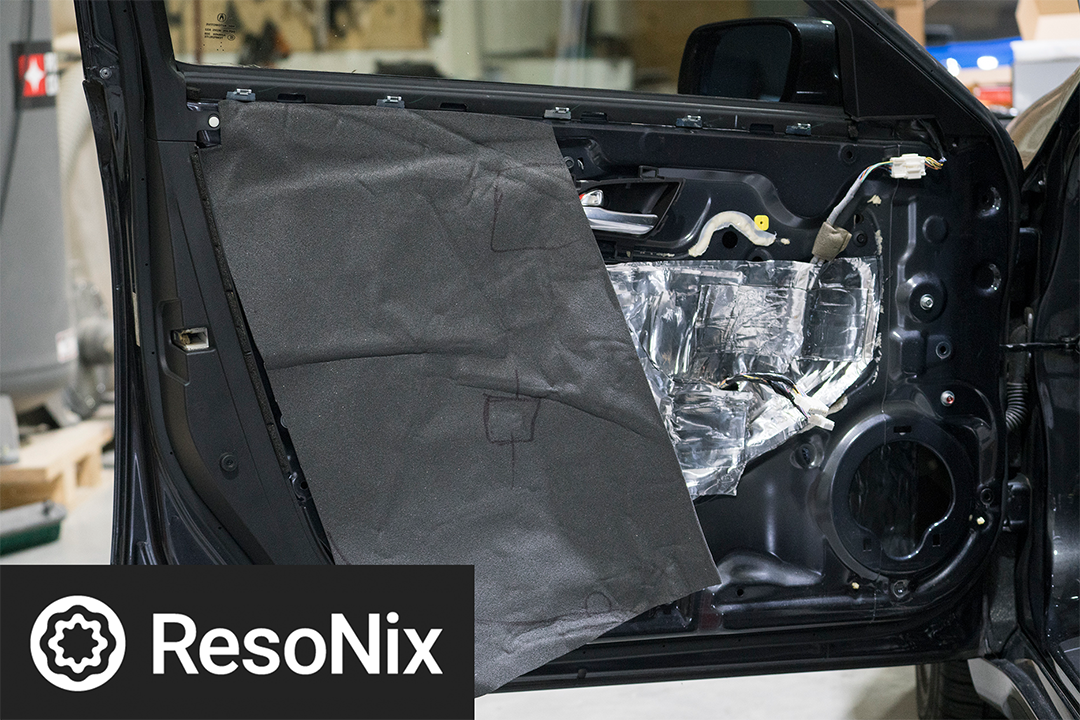
Inner door skin with 100% CCF coverage.
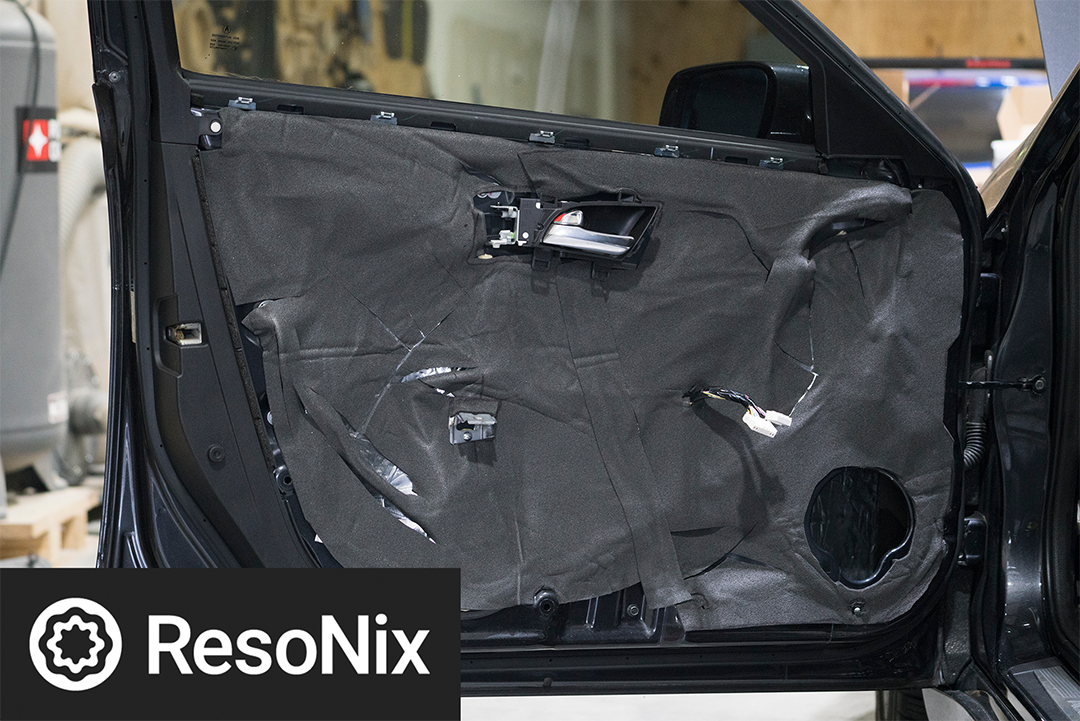
You may notice that most inner door skins arent 100% flat and that the adhesive on the foam doesn’t always like to stretch or conform. What I do to combat that is lay it down fully stretched and pressed down to whatever it could reach. Inside of the dips that the foam cannot stretch or conform to, I take a razor blade and make slits to give it some relief. Works like a charm. Make sure you know what is under exactly where you are cutting before you do so. The last thing you want to do is accidentally cut something that shouldn’t be cut.
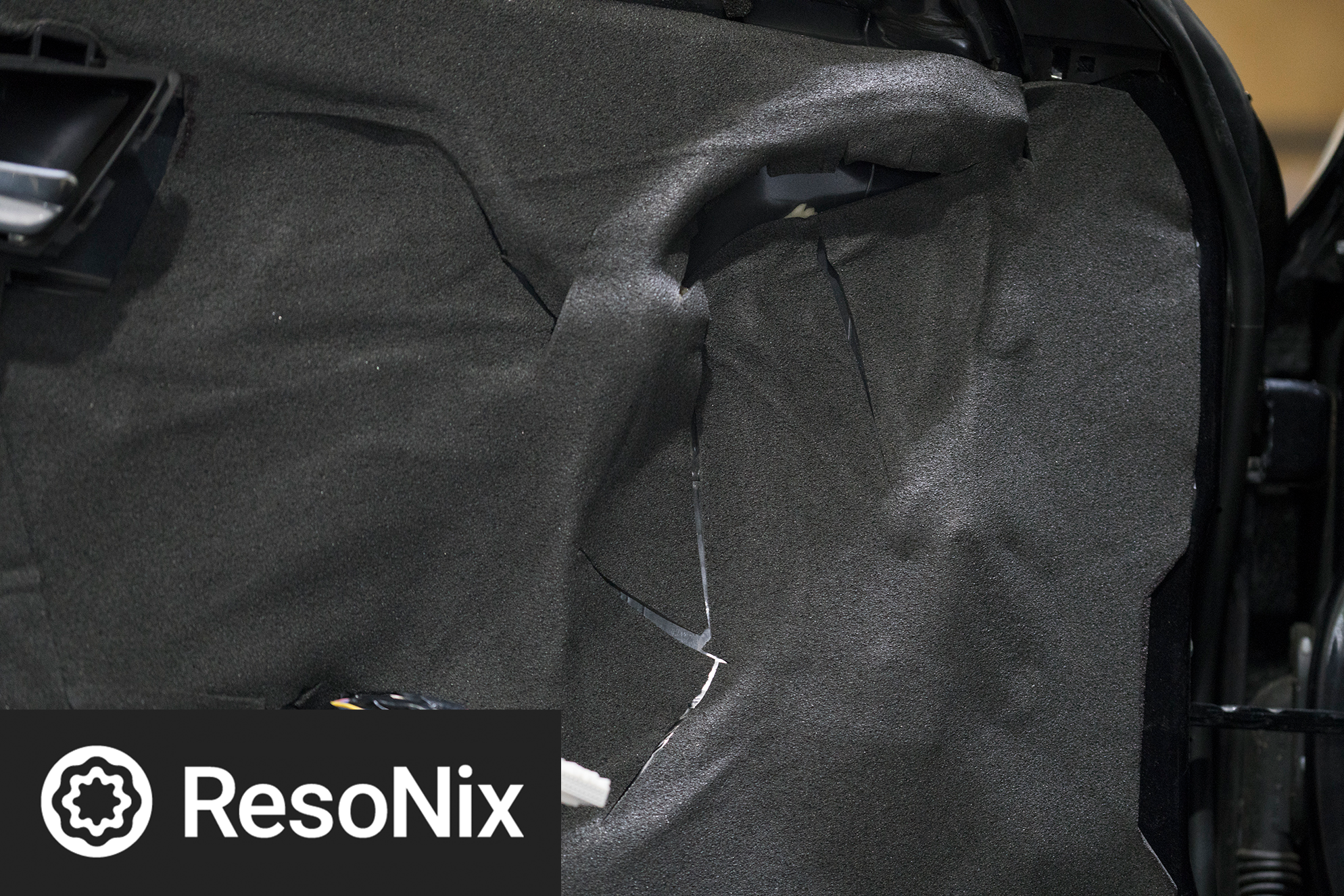
After the doors have all CLD and CCF applied, we installed our speaker with its baffle and applied a CCF ring around the baffle to couple the speaker to the cabins air space. This also helps stabilize the door panel. That said, the CCF ring should be mated up to the door panel, otherwise, it’s not doing much.
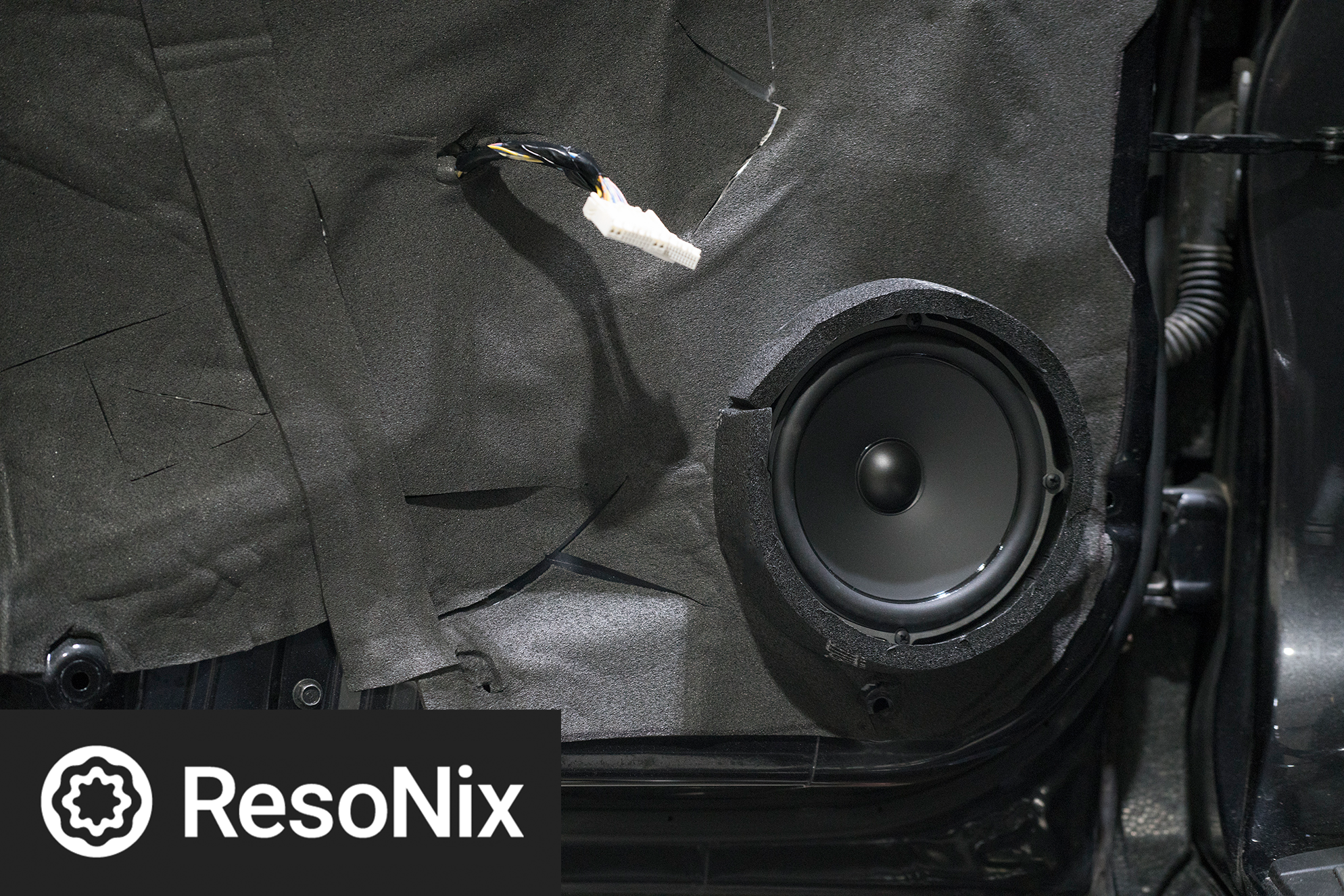
When I put this door back together I realized that this little panel that covers the two screws that hold on the door handle and lock latch sits a little loose and will definitely be prone to vibration. I used a small amount of butyl rope to help decouple and adhere it in its final resting place.
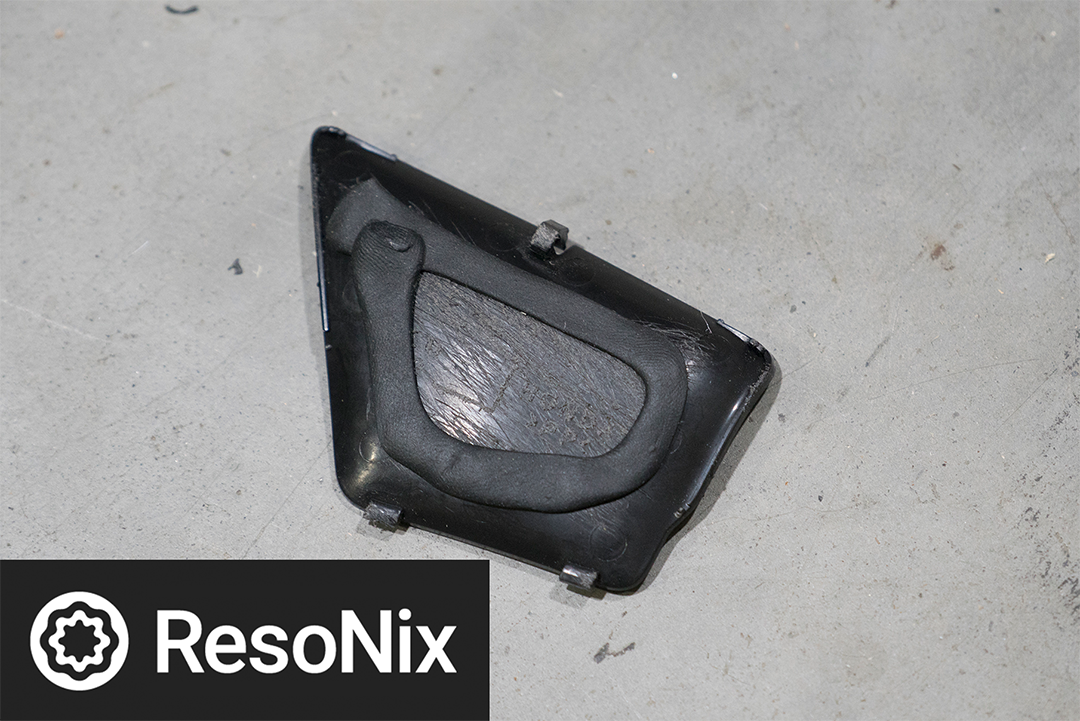
Installation Products
ResoNix is an automotive sound treatment company that offers top quality products which provide superior performance in their respective categories.
No gimmicks, no baseless claims, no nonsense. Constrained layer dampers, decouplers, and noise barriers are part of our soon to be released line-up
with a focus on data-backed, solutions-based
products developed by enthusiasts, for enthusiasts.
CONTACT
11 Holt Drive, suite 123,
Stony Point, NY 10980
info@resonixsoundsolutions.com
(845) 553-9500
Stony Point, NY 10980
info@resonixsoundsolutions.com
(845) 553-9500

CONTACT
LINKS
ResoNix is an automotive sound treatment company that offers top quality products which provide superior performance in their respective categories.
No gimmicks, no baseless claims, no nonsense. Constrained layer dampers, decouplers, and noise barriers are part of our soon to be released line-up
with a focus on data-backed, solutions-based
products developed by enthusiasts, for enthusiasts.
11 Holt Drive, suite 123,
Stony Point, NY 10980
info@resonixsoundsolutions.com
(845) 553-9500
Stony Point, NY 10980
info@resonixsoundsolutions.com
(845) 553-9500
Menu

